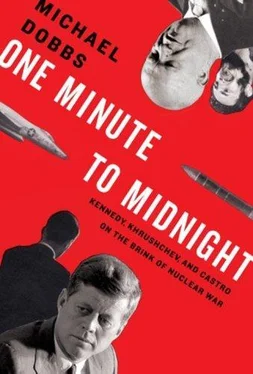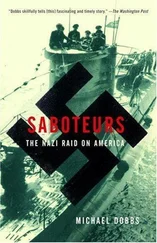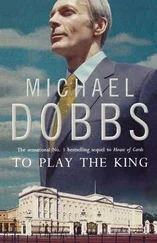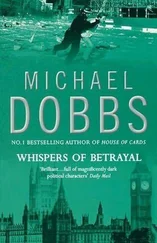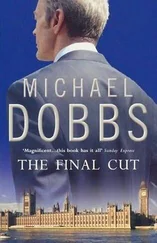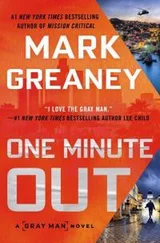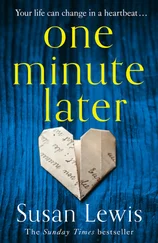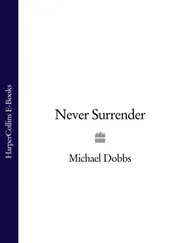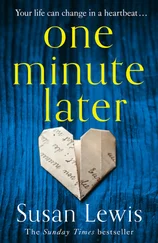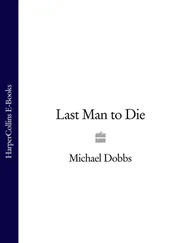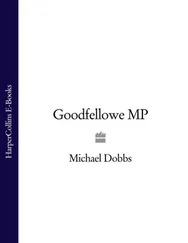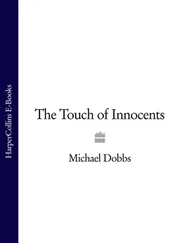The attraction was not just geographic and economic; it was very personal. By the eve of the revolution, Ernest Hemingway, America’s most celebrated writer, had taken up residence at the Finca Vigia, on a hilltop overlooking Havana. The Mafia boss, Meyer Lansky, had built a twenty-one-story hotel called the Riviera on the Malecon and was advising Batista on gambling reform. Nat King Cole was singing at the Tropicana nightclub. And a young American senator named John F. Kennedy was making frequent visits to Havana as the guest of the pro-Batista U.S. ambassador.
THURSDAY, OCTOBER 18, 9:30 A.M.
Bobby Kennedy was already having trouble keeping his promise—made Tuesday afternoon—to hold daily Mongoose briefings in his office. He had been unable to attend the scheduled Wednesday session because of an urgent White House meeting. But on Thursday he managed to squeeze in half an hour with Mongoose operatives, including Lansdale and Bill Harvey, the head of the CIA’s anti-Castro task force.
Gruff and uncouth, Harvey had the job of making sense of the blizzard of paperwork generated by Ed Lansdale. The two men were like fire and water. The visionary Lansdale would come up with dozens of new ideas for hitting Castro, only to have them squelched by the methodical Harvey. In Harvey’s view, such operations required months of meticulous planning before they could be launched.
By the third day of the crisis, Bobby was rethinking his views on how to respond to Khrushchev. His initial fury at Soviet duplicity had given way to more sober analysis. One of his biographers would later detect a pattern: “an initial burst of belligerence and intransigence, followed by a willingness to listen and change.” He now opposed a surprise air attack on the missile sites as incompatible with American traditions, a kind of Pearl Harbor in reverse. “My brother is not going to be the Tojo of the 1960s,” he had told a White House meeting on Wednesday. Bobby was beginning to favor a naval blockade of Cuba combined with some kind of ultimatum to Moscow, an idea first proposed by McNamara.
Bobby’s sudden streak of moralism did not, however, extend to calling a halt to Operation Mongoose. According to Harvey’s record of the Thursday, October 18, meeting, the attorney general continued to place “great stress on sabotage operations and asked to be furnished with a list of the sabotage operations CIA planned to conduct.”
The most feasible target, in Harvey’s view, was a copper mine in Pinar del Rio Province in western Cuba. The CIA had been trying for months to halt production at the Matahambre mine and had made careful studies of the terrain, but had been hampered by a string of bad luck. The first operation, back in August, failed after the would-be saboteurs got lost in a mangrove swamp. The second attempt was aborted when the radio operator fell and broke his ribs. The third time around, the sabotage team had got within a thousand yards of the target when it was challenged by a militia patrol and forced to withdraw after a firefight. Despite these setbacks, Matahambre was still at the top of Harvey’s “to do” list.
He informed RFK and Lansdale that he would “re-run” the operation as soon as circumstances allowed.
FRIDAY, OCTOBER 19, 9:45 A.M.
The president was leafing through the latest batch of intelligence reports as the generals filed into the Cabinet Room. The news from Cuba was becoming more ominous by the day. In addition to the original missile sites in Pinar del Rio, U-2 spy planes had discovered a second cluster of sites in the center of the island. The new sites included facilities for so-called intermediate-range ballistic missiles, or IRBMs, which were capable of hitting targets nearly 2,800 miles away, more than double the distance of the medium-range rockets, or MRBMs, discovered on October 14.
There was still no evidence that the bigger missiles had arrived in Cuba, so they were a less immediate threat. But work on the original missile sites was proceeding rapidly. The CIA had identified three different medium-range ballistic missile regiments on the island. Each regiment controlled eight missile launchers, making twenty-four in all.
“Let’s see,” said Kennedy, reading aloud passages from the intelligence report. “Two of these missiles are operational now…missiles could be launched within eighteen hours after the decision to fire… yields in the low megaton range.”
He had been dreading this meeting, but knew he must at least go through the motions of consulting with the Joint Chiefs of Staff. He felt that the generals had misled him over the Bay of Pigs, pushing him to support an ill-prepared invasion of Cuba by anti-Castro exiles. He was particularly mistrustful of the Air Force chief of staff, General Curtis LeMay, a cigar-chomping World War II hero with three thousand nuclear bombs under his command. “I don’t want that man near me again,” Kennedy had said, after listening to one of LeMay’s blood-curdling briefings about bombing America’s enemies back to the “Stone Age.” Profane, tough, and brutally efficient, LeMay was the kind of man you wanted by your side when the fighting started, but not the type who should be making decisions about war and peace.
LeMay could barely contain himself as the president voiced his fears of a nuclear conflagration. Attempting to put himself in Khrushchev’s shoes, Kennedy predicted that a U.S. attack on Cuba would inevitably be followed by a Soviet attack on Berlin. “Which leaves me with only one alternative, which is to fire nuclear weapons—which is a hell of an alternative.”
Nonsense, retorted LeMay, speaking slowly as if addressing a somewhat dim pupil. It was the other way round. Not taking firm action in Cuba would only encourage the Soviets to try their luck in Berlin. A naval blockade of Cuba, as proposed by some of Kennedy’s advisers, could send a fatal message of weakness.
“It will lead right into war. This is almost as bad as the appeasement at Munich.”
There was a shocked silence around the table. LeMay’s remark was an audaciously insulting reference to the president’s father, Joseph P. Kennedy, Sr., who had advocated a policy of negotiating with Hitler while serving as U.S. ambassador to London. LeMay was implying that JFK, who had launched his political career as the author of an anti-appeasement book called While England Slept, was about to follow in his father’s footsteps.
LeMay’s strategy for dealing with the rival superpower was based on a simple logic. The United States enjoyed overwhelming nuclear superiority over the Soviet Union. However much Khrushchev might threaten and bluster, he had absolutely no interest in provoking a nuclear war that he was bound to lose. Thanks to the Strategic Air Command (SAC), the most powerful military force in the history of the world, America had “the Russian bear” by the balls. “Now that we have gotten him in a trap, let’s take his leg off right up to his testicles,” he told his associates. “On second thoughts, let’s take off his testicles, too.”
Kennedy’s logic was very different. The United States might have many more nuclear bombs than its adversary, but “winning a nuclear war” was a pretty meaningless concept. As many as 70 million Americans could die in a nuclear war with the Soviet Union. “You’re talking about the destruction of a country,” he told the Joint Chiefs. He wanted to avoid provoking Khrushchev into what McNamara called “a spasm response,” an involuntary knee-jerk reaction that would end up in a nuclear exchange.
The commander in chief was shocked by the impertinence of the Air Force general. When LeMay told him that “you’re in a pretty bad fix at the present time,” Kennedy thought he hadn’t heard right.
Читать дальше
